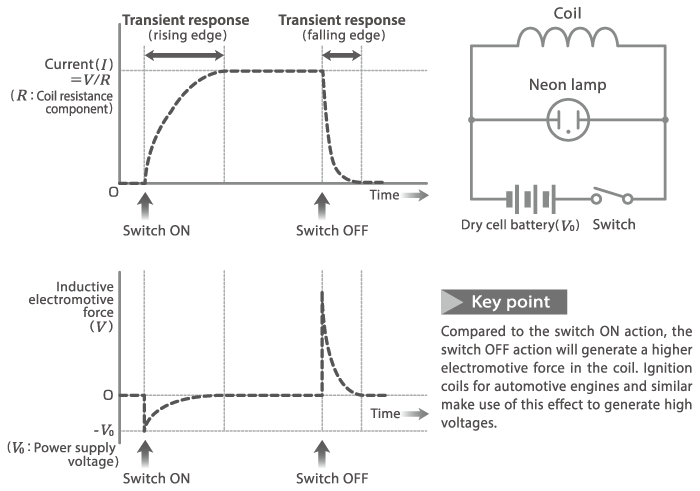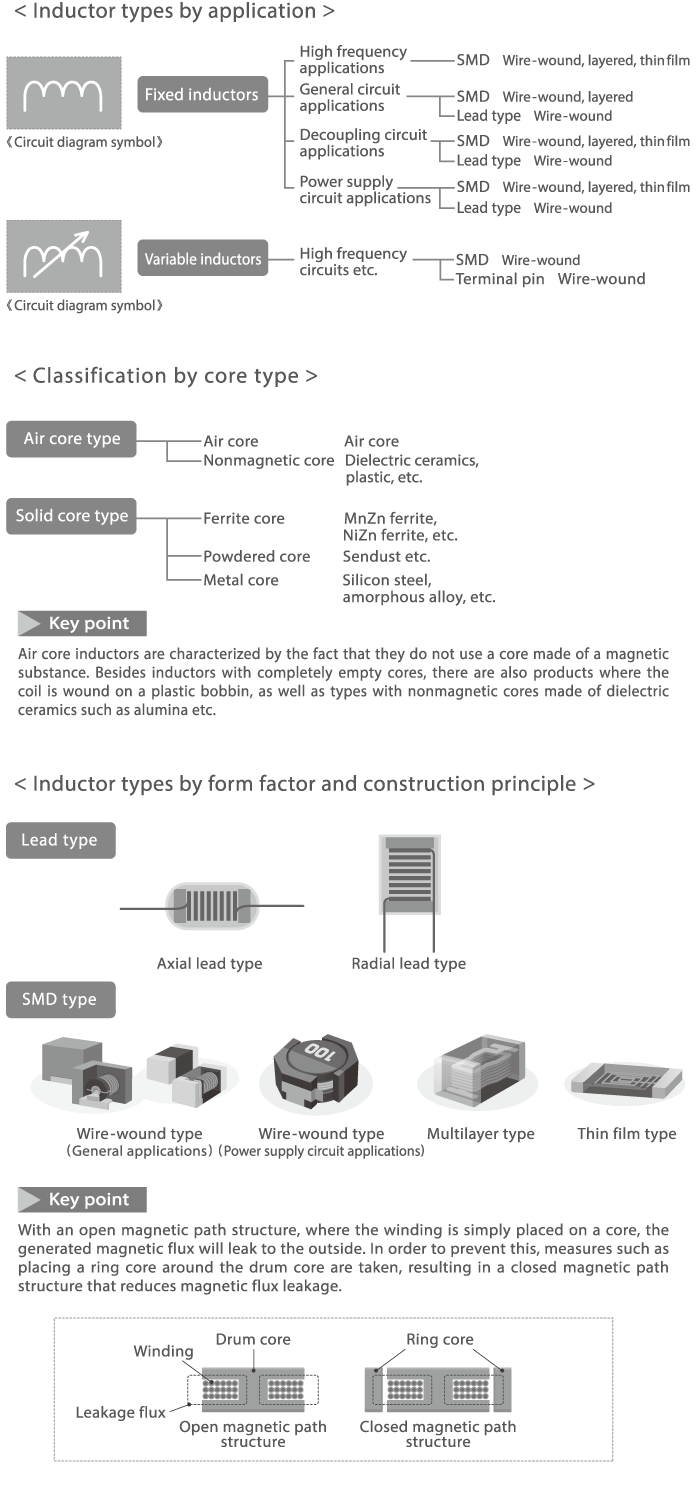Electronics ABC
Inductors―Part 1 The Basics of Inductors ①

Along with resistors and capacitors, inductors (coils) are one of the three major passive component categories for electronic devices. Coils exhibit special characteristics when a current passes through them, and through the utilization of these characteristics, inductors play an important role in power supply circuits, general signal circuits, and high frequency circuits.
Magnetic properties of current and coils
An electric current flowing in a conductor creates a magnetic field that can exert an influence on its surrounding area. This is known as the electromagnetic effect of current, discovered in 1820 by Hans Christian Oersted. Due to this effect, two parallel conductors in which current flows in the same direction attract each other. By contrast, they repel each other if the current flows in opposing directions. In order to measure the strength of this attracting or repelling force, André-Marie Ampère built a device where conductors were suspended in a rectangular framework. Ampère also built a coil with a conductor wound in a cylindrical shape, and called it a solenoid. This is the origin of the solenoid coil used in antenna coils and similar. At about the same time it was also discovered that a solenoid coil in which a current is flowing exhibits similar properties as a magnet.

The orientation of the magnetic force lines can be ascertained by the so-called right-handed screw rule. If the current direction is likened to a right-handed screw being driven into a material, the magnetic field lines are oriented in the same sense as the screw being turned.¥

If an electric current in two parallel conductors is flowing in the same direction, an attractive force acts on the conductors. If the current is flowing in opposing directions, a repulsive force acts on them.
Coil and magnetic force lines
When a current flows in a coil, the magnetic force lines are combined and also pass through the core of the coil.
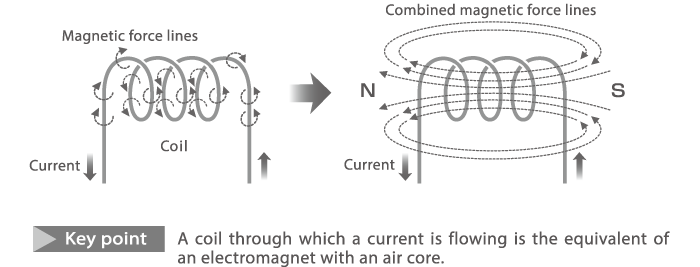
Right hand thumb rule
This rule makes it easy to understand the direction of magnetic force lines in relation to a current.
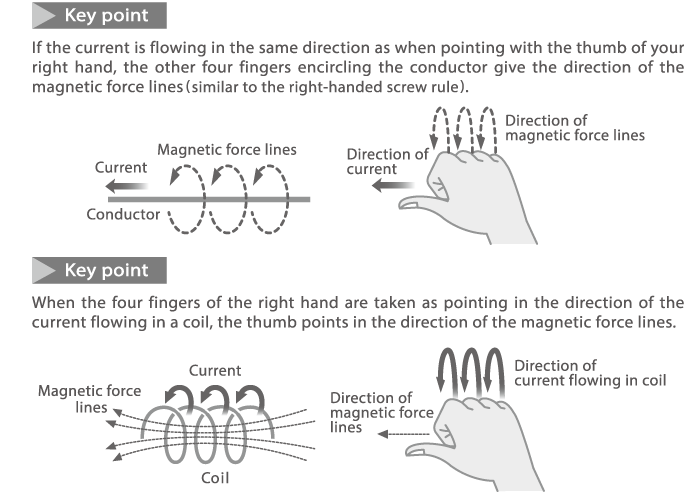
Electromagnetic induction and coil inductance
The principle of electromagnetic induction was discovered by Michael Faraday in 1831. This refers to the electromotive force that is caused by magnetic flux changes, a phenomenon contrary to the current creating magnetic force lines that result in a magnetic effect. For example, if two coils are wound on an iron core of circular shape, and if the primary side coil is connected to a battery via a switch, turning the switch on and off will result in a current flowing in the coil on the secondary side, due to the effect of the electromotive force (induced electromotive force). This phenomenon of electromagnetic induction is also called mutual induction.
Mutual induction
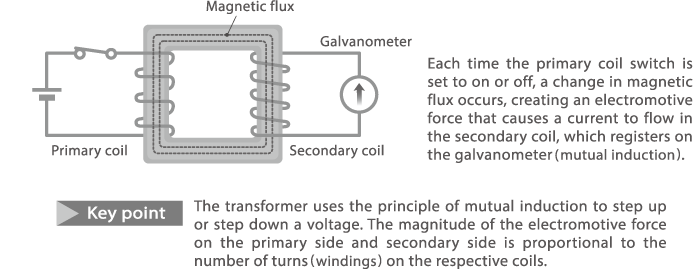
Self induction and coil inductance
The electromagnetic induction effect also occurs in a single coil setup. When the current flowing through the coil changes, the created magnetic flux also changes accordingly, producing an electromotive force in the coil. This is referred to as self induction. The electromotive force (V) at this time is expressed by the formula below, where the proportionality constant L expresses the self inductance. Normally, when the inductor of a coil is given, this refers to self inductance.
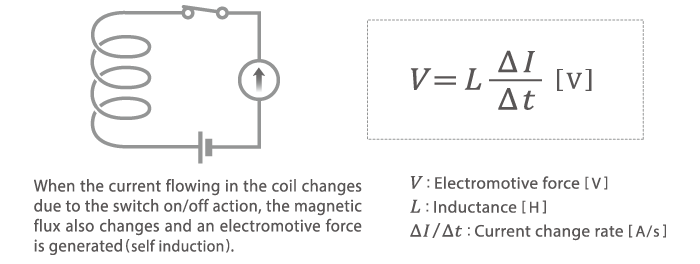
The inductance is the most important parameter of a coil. The magnetic flux (φ) generated in the coil is proportional to the inductance (L) and the flowing current (I).

Lenz's law
The so-called Lenz's law offers a simple way of knowing the direction in which the current induced by electromagnetic induction will flow. The law states that induced current opposes the magnetic flux change or current change and flows in such a way as to maintain the original state. The relationship is one of "push if pushed, pull if pulled" which resembles a reaction in mechanics and is therefore also called the law of reaction.
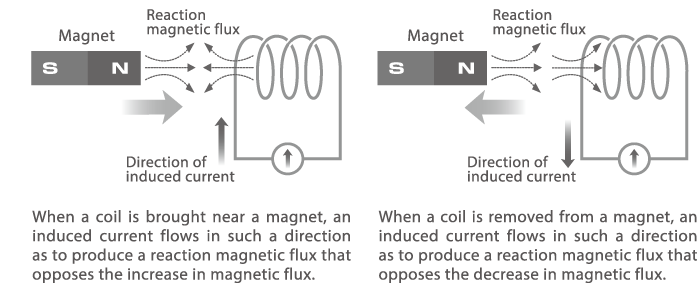
Coil design and inductance
The coil inductance changes according to the coil shape. For example, the inductance of a single layer solenoid coil can be calculated using the equation shown below. The Nagaoka coefficient (k) is a correction coefficient for coil shape, introduced by the physicist Prof. Hantaro Nagaoka. It produces a graph such as shown below, for a coil with a radius r of the cross-sectional area and length l. With an infinitely long coil (2r/l = 0), the Nagaoka coefficient is 1, and with a coil of finite length, it is less than 1. This means that given the same cross-sectional area, the shorter the length, the lower the inductance.
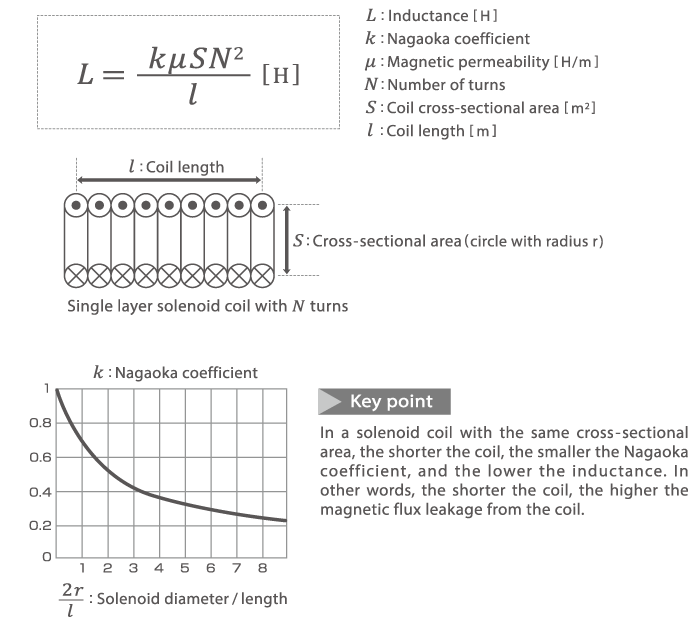
Basic ways of increasing inductance
From the above equation, it is clear that a longer coil, larger cross-section area, and more turns will all have the effect of increasing the inductance. Furthermore, even when the inductance parameters are the same, using a magnetic body with high magnetic permeability as a core will increase inductance significantly as compared to an air core. Magnetic permeability is an index for the capability to absorb magnetic flux. Materials that can be easily magnetized (high magnetic susceptibility) have a higher magnetic permeability.
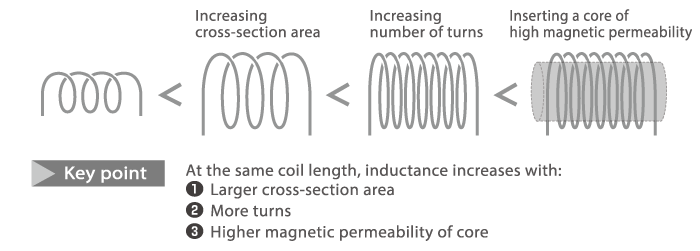
Relative magnetic permeability of various materials
The magnetic permeability of a material as compared to magnetic permeability of a vacuum is called the relative magnetic permeability (value with no unit). With the relative magnetic permeability of a vacuum taken as 1, the value for weak magnetic substances (nonmagnetic materials) such as air, water, copper, or aluminum is also around 1. By contrast, the relative magnetic permeability of soft ferromagnetic substances such as nickel, iron, ferrite, or electromagnetic steel ranges from several hundred to 100,000 and more. A soft magnetic material is one that can be easily magnetized by an external magnetic field but whose magnetization disappears when the external field is removed.
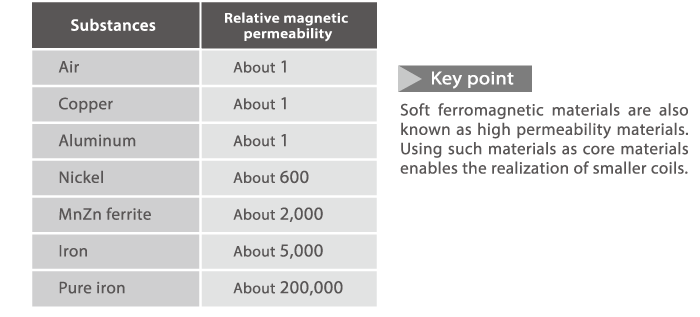
TDK is a comprehensive electronic components manufacturer leading the world in magnetic technology



